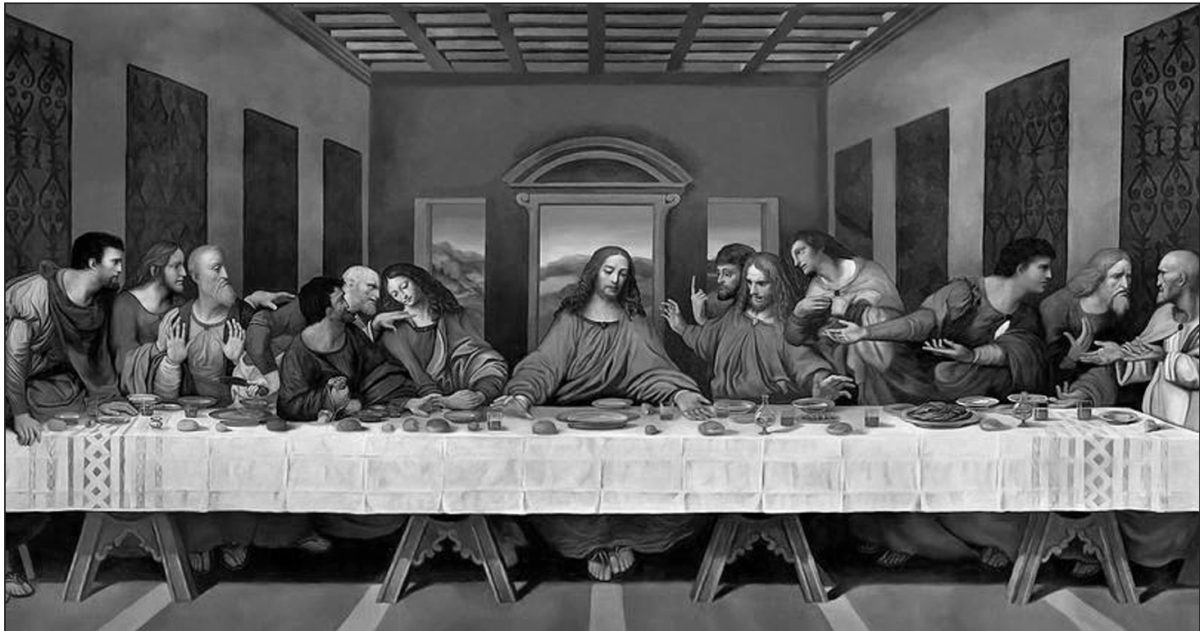I recently picked up the latest printing of our beloved Crier; I was, quite vainly, going to read my most recent article, “Where’s My Water?” However, in the course of my perusing, I noticed a bold headline: “The Catholic Church should allow women to be priests”, what a statement!
The idea of priestesses is nothing new. Some Catholics have advocated for the Church to allow female priests. As a brief aside, a “female priest” would just be called a priestess, think actor and actress; this clarification will save us much unnecessary adjectival use moving forward.
I’m sure that the article was written in good faith, even if it might be called bad theology. I do not doubt that supporters of priestesses come to that opinion from a place of justice, equality, and a desire to serve. This is all well and good, but it does not actually prove anything.
The second paragraph of the article states that one reason priestesses cannot exist is because they were not called to be disciples of Jesus. This is not true. Jesus had female disciples, and to my knowledge, nobody, no matter how traditional, is denying this. Jesus had thousands of disciples, many of whom, like Mary Magdalene, were women.
I assume there is some confusion about the term “disciple” versus “apostle”. Jesus had many disciples, but He only chose twelve apostles. All of his apostles were men. The apostles were given the power to ordain people as priests and consecrate them as bishops. The apostles only ever exercised this power unto men.
Paragraph five makes a Trinitarian error, not difficult to do, even Saint Augustine got some Trinitarian stuff wrong. Jesus is God, but Jesus is not the Holy Spirit or God the Father. Jesus was and is a man. He took on the body of a man, and He was raised and ascended in that body. As the author notes, God exists above the human understanding of gender. This is true. However, God is the creator of gender; He understands it better than any human can. And, with this perfect understanding, He became man. He did not become androgynous; He did not become a woman; He did not become some sort of combination of the sexes. He became a man. The Holy Spirit did not become man, and if one wants to refer to the Spirit using feminine language, go at it. The Father seems to have a clear preference for masculine terminology. However, with Jesus, there is no debate. Jesus is not now and was not on Earth, a woman.
Paragraph six makes a logical mistake. Just because God is male (a statement that is only literally true in the context of Christ) does not make male God. That would be like saying that because the sun is hot, all hotness is the sun. Mary was a virgin, all virgins are Mary. Dr. Daly may have meant something more metaphorically; I really do not know, but what I do know is that, from a logical standpoint, the “God is male, male is God” line is invalid.
Paragraph eight makes the point that Phoebe may have been a deacon. I do not feel the need to actually get into whether Phoebe was a deacon or not; there is much confusion and debate about what the scripture means; it would be a very large misstep to try and assert certainty to the claim that Phoebe was an ordained deacon in the way that we understand the modern diaconate. All I really must say is that deacons are not priests, so a woman being a deacon in the early Church does not mean priestesses are allowable.
On the intersex issue, the given estimate of 1.7% has been heavily scrutinized in academia. Dr. Leonard Sax estimates the true percentage to be closer to 0.018%. Even then, the case of someone who was born intersex wanting to become a priest would need to be handled by a bishop, and would likely require discernment, prayer, and much conversation. The Church’s position is that everyone is inherently either male or female. Men can be priests. In the very rare and unusual situation where one’s sex is hard to identify, it does not change the fact that God creates people either male or female. I think this suffices on this issue.
In response to paragraph sixteen, the Holy Spirit can work in mysterious ways, and Satan can disguise himself as an angel of light. This is why prudence and reliance on Mother Church are necessary for Catholics and all believers. Our personal convictions can be powerful and true, but they are especially vulnerable to corruption. Scripture and Sacred Tradition have been found firm; they are unchanged and unchangeable.
One may notice that I have only attacked the position and arguments put forward in the article, rather than articulate a defense of the male priesthood. I know. There are many wonderful resources available online that defend and explain the Church’s two-thousand-year teaching on this matter, so I do not feel the need to put such a defense here. I think it should suffice, from a theological standpoint, to say: the teaching of a male priesthood is infallible. However, as the original argument brought forth several specific points, I thought it would be appropriate to respond, in my own fashion, to these specific points. I encourage others who are well-versed in the faith to join this conversation and explain their thoughts and reasoning. If I have made any flaws in my response, either of too much scrutiny or too much charity, I invite correction.


